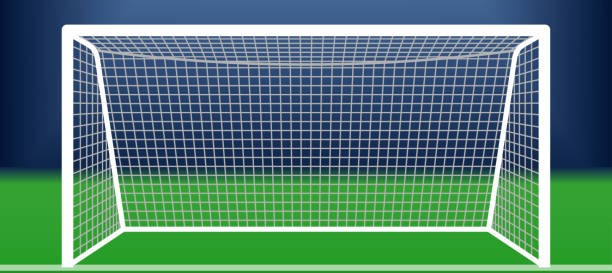













THE RIGHT WINGER.

The right winger in football is an attacking player who operates primarily on the right flank of the field. Their main
responsibilities include providing width, creating goal-scoring opportunities, and contributing to both offensive and
defensive plays. Here’s a detailed breakdown of the right winger’s role:
Positioning:
- ▫ WIDE ON THE RIGHT FLANK: The right winger is positioned on the right side of the pitch, staying wide to stretch the opponent’s defense
and create space for teammates.
- ▫ HIGH ATTACKING POSITION: Typically plays high up the field, often level with or slightly behind the team’s forwards, allowing them to attack
quickly.
- ▫ TOUCHLINE OR INVERTED WINGER: Right wingers can either hug the touchline and deliver crosses or, as inverted wingers, cut inside onto
their stronger foot for shooting opportunities.
Primary Role: Attacking and Creating Chances
- ▫ PROVIDING WIDTH: The right winger stretches the defense, allowing central players more room to operate and creating gaps for attacking
runs.
- ▫ CROSSING: A key duty is delivering accurate crosses into the penalty area for forwards to finish. Effective crossing can lead to high-quality
scoring chances.
- ▫ CUTTING INSIDE: Many right wingers, especially left-footed players, will cut inside towards the center of the field, creating shooting
opportunities or passing lanes.
- ▫ DRIBBLING: Right wingers are often skilled dribblers, capable of taking on defenders in one-on-one situations to break down defenses.
Supporting the Forward Line:
- ▫ ASSISTING THE MAIN STRIKER: Right wingers frequently provide assists through crosses and passes, playing a vital role in goal creation.
- ▫ SECONDARY GOAL SCORER: They are expected to score goals themselves, especially when cutting inside, thus serving as an additional threat
alongside the main striker.
- ▫ COMBINATION PLAY: Right wingers often link up with the right-back and midfielders through quick passing sequences to advance the ball into
the attacking third.
Defensive Responsibilities:
- ▫ TRACKING BACK: Right wingers must also support the right-back defensively, tracking back to help defend against opposing attacks,
particularly from the left flank.
- ▫ PRESSING: They play a crucial role in pressing the opponent's defenders or midfielders, aiming to win back possession high up the pitch.
- ▫ MARKING AND COVERING: Wingers need to mark the opposition’s left-sided players during defensive phases, particularly during set pieces or
counterattacks.
Tactical Variations:
- ▫ TRADITIONAL WINGER: A classic right winger stays wide and focuses on delivering crosses, often seeking to beat defenders on the flanks.
- ▫ INVERTED WINGER: An inverted right winger will cut inside onto their stronger foot, increasing goal-scoring opportunities and creating
space for overlapping full-backs.
- ▫ WIDE FORWARD: In formations like 4-3-3, the right winger acts as a wide forward, concentrating more on goal-scoring and less on traditional
wing responsibilities.
Skills and Attributes:
- ▫ PACE: Speed is crucial for wingers to beat defenders and recover defensively.
- ▫ DRIBBLING ABILITY: Good dribbling skills are essential for maneuvering past defenders and creating chances.
- ▫ CROSSING: Delivering accurate and effective crosses is a primary skill of a right winger.
- ▫ SHOOTING: They should be capable of scoring from various positions, especially when cutting inside.
- ▫ TACTICAL AWARENESS: Understanding when to stay wide or cut inside is key for exploiting defensive weaknesses.
- ▫ STAMINA AND WORK RATE: Wingers need high stamina to cover large distances and maintain defensive responsibilities.
Formations and the Left Winger's Role:
- ▫ 4-3-3 FORMATION: In this setup, the right winger operates as one of three forwards, focusing on width, crossing, and goal-scoring.
- ▫ 4-4-2 FORMATION: In this traditional setup, the right winger is part of the midfield, balancing attacking duties with defensive
responsibilities.
- ▫ 3-4-3 FORMATION: The right winger plays as a wide forward, emphasizing offensive contributions while relying on wing-backs for defensive
cover.
Summary: The right winger is a crucial attacking player who provides width, creates goal-scoring opportunities, and assists in
defensive duties. They must be fast, skilled at dribbling, and capable of delivering accurate crosses, while also being tactically
aware to exploit defensive weaknesses. The right winger’s role has evolved, with modern players often cutting inside to shoot,
making them versatile threats in attack.




























